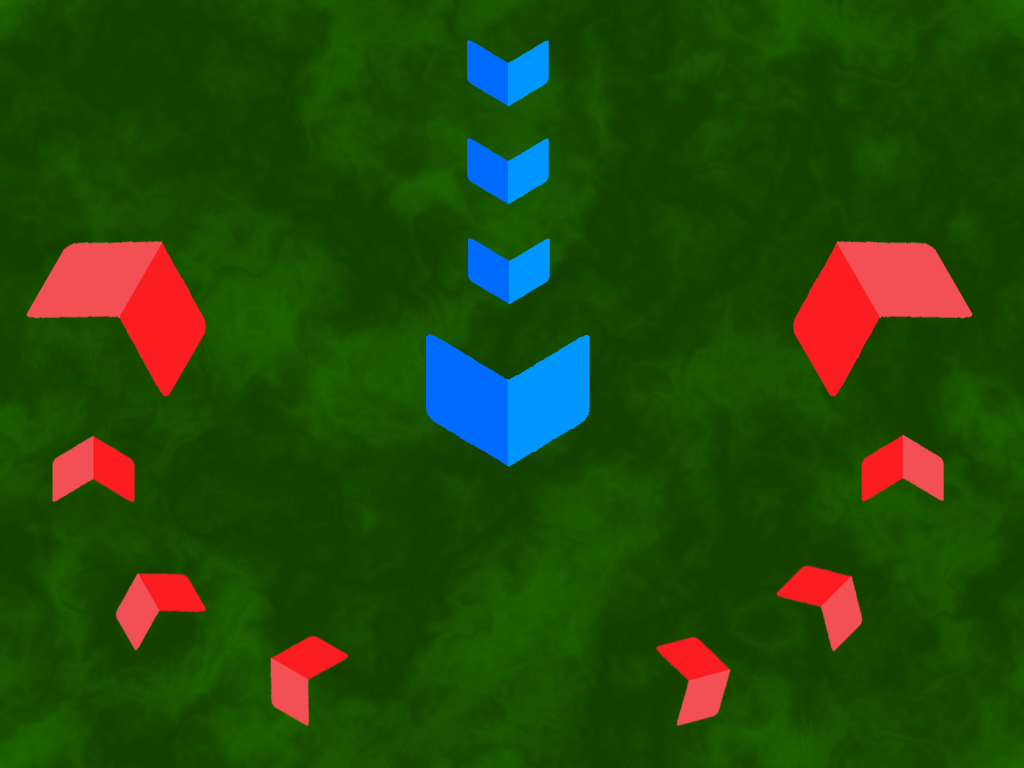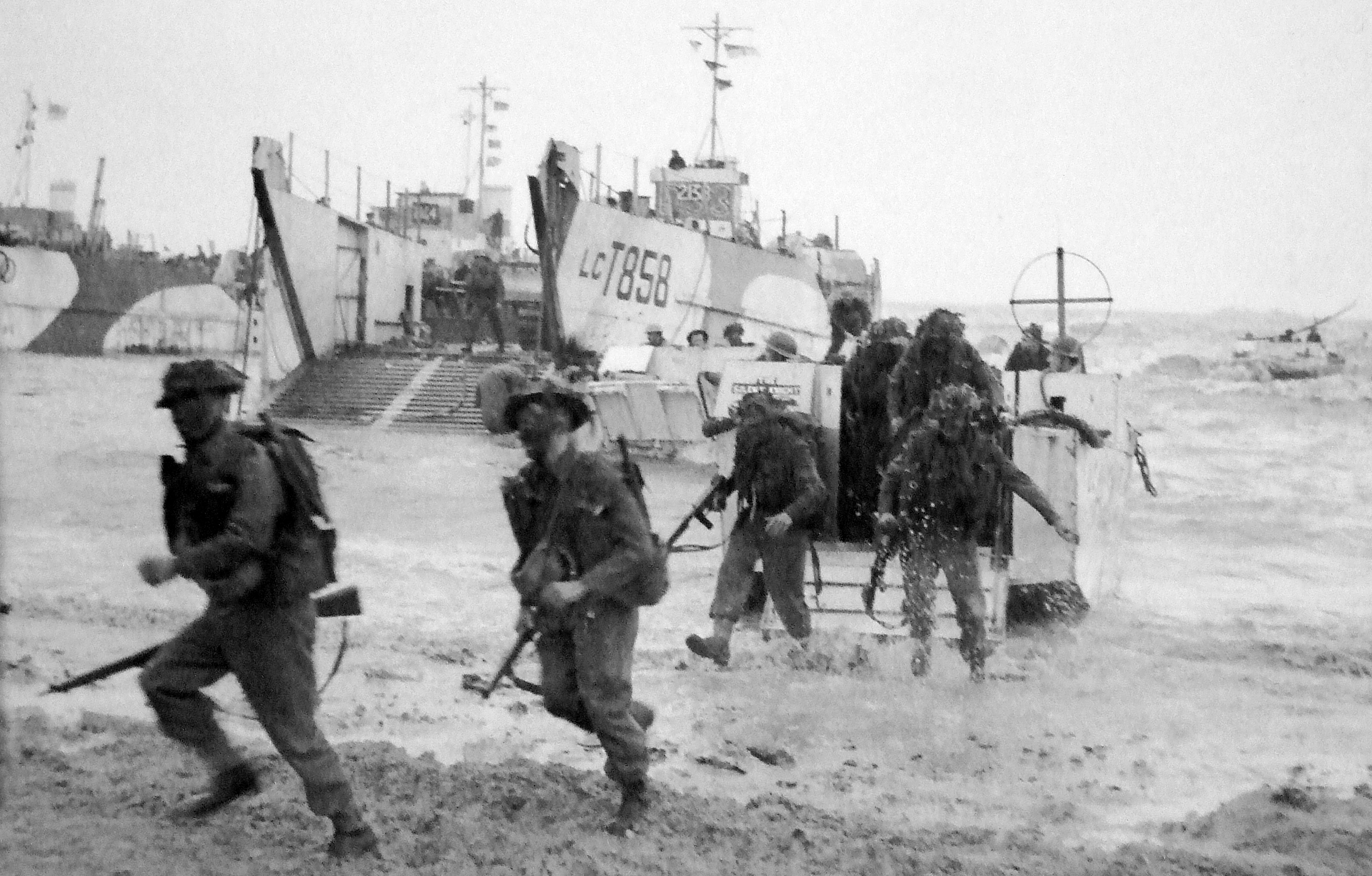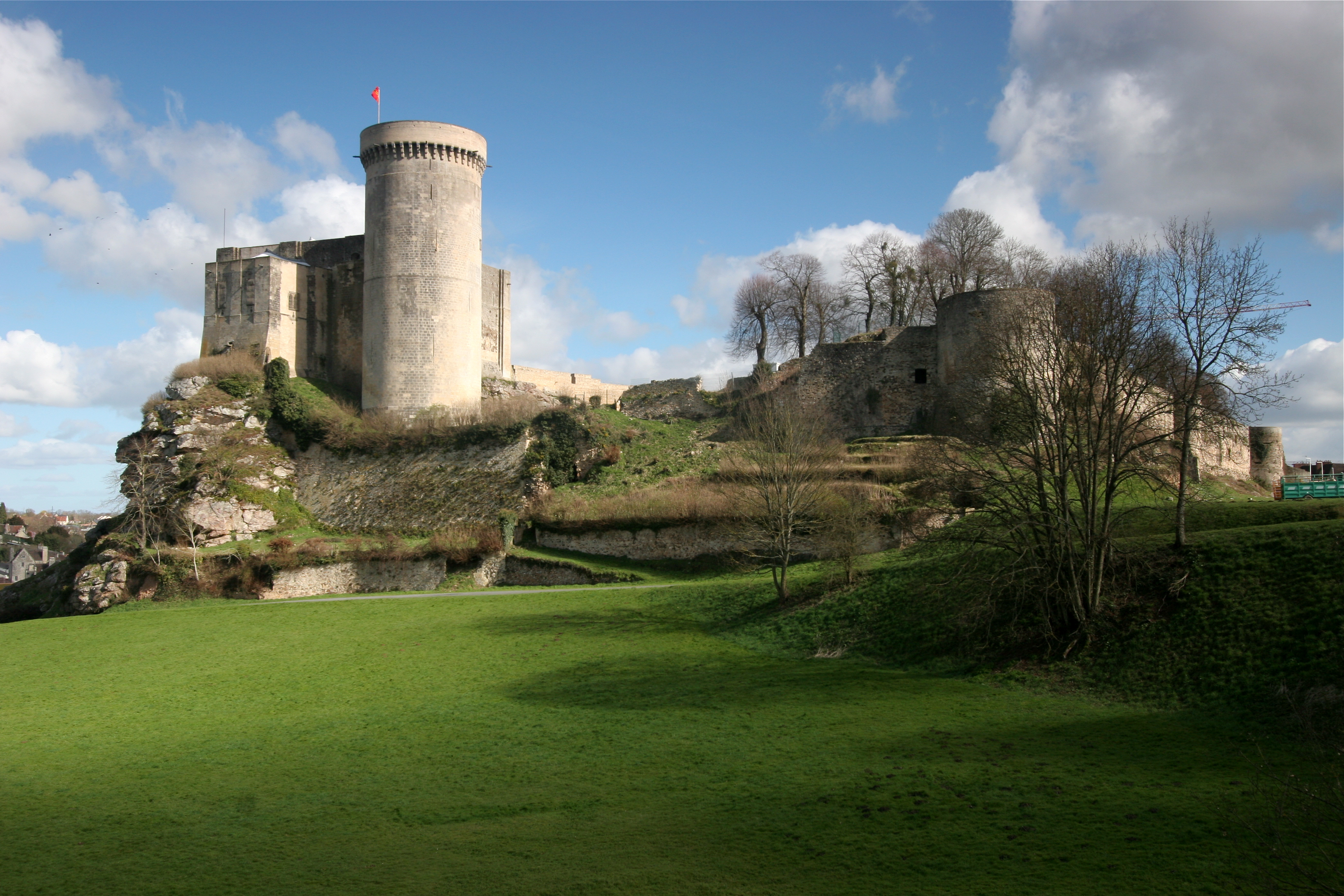|
Second Battle Of The Odon
The Second Battle of the Odon comprised operations fought by the British Second Army (United Kingdom), Second Army during the Second World War. Attacks took place in mid-July 1944 against 5th Panzer Army, Panzergruppe West, as part of the Operation Overlord, Battle of Normandy. Operations Greenline and Pomegranate were intended to draw German attention away from Operation Goodwood, an attack from the Orne bridgehead on 18 July. The British wanted to prevent the Germans from withdrawing panzer divisions from opposite the Second Army to create an armoured reserve which could oppose the First United States Army, First US Army during the Operation Cobra offensive in the west. The operations in the Odon (river), Odon valley kept three German armoured divisions in the front line west of Caen, away from the Goodwood battlefield, east of the Orne. Background Operation Overlord The Norman town of Caen was a Normandy landings, D-Day objective for the 3rd Division (United Kingdom), 3rd B ... [...More Info...] [...Related Items...] OR: [Wikipedia] [Google] [Baidu] |
Battle For Caen
The Battle for Caen (June to August 1944) was a military engagement between the British Second Army and the German in the Second World War for control of the city of Caen and its vicinity during the Battle of Normandy. Caen is about inland from the Calvados coast astride the Orne River and Caen Canal, at the junction of several roads and railways. The communication links made it an important operational objective for both sides. Caen and the area to its south are flatter and more open when compared to the bocage country of western Normandy, and Allied air force commanders wanted the area captured quickly in order to construct airfields to base more aircraft in France proper. The British 3rd Infantry Division was to seize Caen on D-Day or alternatively, dig in short of the city. Caen, Bayeux and Carentan were not captured on D-Day, and the Allies concentrated on linking the beachheads. British and Canadian forces captured the area of Caen north of the Orne during Operati ... [...More Info...] [...Related Items...] OR: [Wikipedia] [Google] [Baidu] |
Odon (river)
The Odon () is a river in the Calvados department, in Normandy, northwestern France. It is 47 km long and is a left tributary of the Orne. The river passes through Jurques, Aunay-sur-Odon, Baron-sur-Odon, Bretteville-sur-Odon, Épinay-sur-Odon, Grainville-sur-Odon, Parfouru-sur-Odon, Tournay-sur-Odon and Tourville-sur-Odon. It flows into the Orne in Caen Caen (; ; ) is a Communes of France, commune inland from the northwestern coast of France. It is the Prefectures in France, prefecture of the Departments of France, department of Calvados (department), Calvados. The city proper has 105,512 inha .... References Rivers of Normandy Rivers of France Rivers of Calvados (department) {{France-river-stub ... [...More Info...] [...Related Items...] OR: [Wikipedia] [Google] [Baidu] |
Pincer Attack
The pincer movement, or double envelopment, is a military maneuver in which forces simultaneously attack both flanks (sides) of an enemy formation. This classic maneuver has been important throughout the history of warfare. The pincer movement typically occurs when opposing forces advance towards the center of an army that responds by moving its outside forces to the enemy's flanks to surround it. At the same time, a second layer of pincers may attack the more distant flanks to keep reinforcements from the target units. Description A full pincer movement leads to the attacking army facing the enemy in front, on both flanks, and in the rear. If attacking pincers link up in the enemy's rear, the enemy is encircled. Such battles often end in surrender or destruction of the enemy force, but the encircled force can try to break out. They can attack the encirclement from the inside to escape, or a friendly external force can attack from the outside to open an escape route. ... [...More Info...] [...Related Items...] OR: [Wikipedia] [Google] [Baidu] |
Operation Perch
Operation Perch was a British offensive of the Second World War which took place from 7 to 14 June 1944, during the early stages of the Operation Overlord, Battle of Normandy. The operation was intended to encircle and seize the Nazi Germany, German occupied city of Caen, which was a Normandy landings, D-Day objective for the British 3rd Division (United Kingdom), 3rd Infantry Division in the early phases of Operation Overlord. Operation Perch was to begin immediately after the British beach landings with an advance to the south-east of Caen by XXX Corps (United Kingdom), XXX Corps. Three days after the invasion the city was still in German hands and the operation was amended. The operation was expanded to include I Corps (United Kingdom), I Corps for a Pincer movement, pincer attack on Caen. On the next day, XXX Corps in the west pushed south to Tilly-sur-Seulles, which was occupied by the ; the village was captured and re-captured several times. I Corps began the eastern thrust ... [...More Info...] [...Related Items...] OR: [Wikipedia] [Google] [Baidu] |
Vimont, Calvados
Vimont () is a commune in the Calvados department in the Normandy region in northwestern France. Population See also *Communes of the Calvados department The following is a list of the 526 Communes of France, communes of the Calvados (department), Calvados Departments of France, department of France. The communes cooperate in the following Communes of France#Intercommunality, intercommunalities ... References Communes of Calvados (department) Calvados communes articles needing translation from French Wikipedia {{Caen-geo-stub ... [...More Info...] [...Related Items...] OR: [Wikipedia] [Google] [Baidu] |
Touques River
The Touques () is a small coastal river in Pays d'Auge in Normandy, France. The Touques is officially navigable up to the Pont des Belges, from its estuary. Its source is in the Perche hills, south of Gacé. The river runs northwards, and flows into the English Channel between the communes of Deauville and Trouville-sur-Mer in North-Western Calvados. Two ports, the Port of Trouville-sur-Mer and Port of Deauville are situated on the river mouth opposite each other. The Touques was diverted and straightened at the end of the 19th century and the neighbouring swamps dried and built on. Trouville-Deauville station was built on the river's former bed. Trouville's harbour dock wall was rebuilt at the end of the 1990s due to erosion of the dock's stone wall. The Touques flows through the following '' départements'' and towns: *Orne: Gacé * Calvados: Lisieux, Pont-l'Évêque, Touques, Trouville-sur-Mer, Deauville Deauville () is a communes of France, commune in the Cal ... [...More Info...] [...Related Items...] OR: [Wikipedia] [Google] [Baidu] |
Argentan
Argentan () is a commune and the seat of two cantons and of an arrondissement in the Orne department in northwestern France. As of 2019, Argentan is the third largest municipality by population in the Orne department.Populations légales 2019: 61 Orne INSEE History Earley history Argentan is situated near the river . Although the region was heavily populated during the Gallo Roman period the town is not mentioned in any texts until the 11th Centaury. The toponym comes from the words ...[...More Info...] [...Related Items...] OR: [Wikipedia] [Google] [Baidu] |
Falaise, Calvados
Falaise () is a Communes of France, commune in the Calvados (department), Calvados Departments of France, department in the Normandy (administrative region), Normandy Regions of France, region in northwestern France. The town is famous for being the birthplace of William I of England, William the Conqueror. It was also the centre of the area known as the Falaise pocket, the decisive engagement of the Operation Overlord, Battle of Normandy in the World War II, Second World War. Geography Falaise lies at the eastern edge of the Armorican Massif, and the town has rocky outcrops on its edges such as the 173 metre high Mount Myrrha. The commune is spread over an area of with a maximum altitude of and minimum of Flowing through Falaise are the river Ante (river), Ante and the river Trainefeuille, both tributaries of the river Dives (river), Dives. Falaise borders the area known as Norman Switzerland, Suisse Normande, on its eastern side. Land distribution According to the 20 ... [...More Info...] [...Related Items...] OR: [Wikipedia] [Google] [Baidu] |
Caumont-l'Éventé
Caumont-l'Éventé () is a former commune in the Calvados department in northwestern France. On 1 January 2017, it was merged into the new commune Caumont-sur-Aure. 8 September 2016 Population International relations It is twinned with the Devon town of .Administration Caumont-l'Éventé was the seat of the former , which included 14 communes with 6373 inhabitants (2008).See also * |
I Corps (United Kingdom)
I Corps ("First Corps") was an army corps in existence as an active formation in the British Army for most of the 80 years from its creation in the World War I, First World War until the end of the Cold War, longer than any other corps. It had a short-lived precursor during the Waterloo Campaign. It served as the operational component of the British Army of the Rhine (part of NATO's Northern Army Group (NORTHAG)) during the Cold War, and was tasked with defending West Germany. Napoleonic precursor Assembling an army in Belgium to fight Napoleon's resurgent forces in the spring of 1815, the Arthur Wellesley, 1st Duke of Wellington, Duke of Wellington formed it into army corps, deliberately mixing units from the Anglo-Hanoverian, Dutch-Belgian and German contingents so that the weaker elements would be stiffened by more experienced or reliable troops. As he put it: 'It was necessary to organize these troops in brigades, divisions, and corps d’armee with those better disciplined ... [...More Info...] [...Related Items...] OR: [Wikipedia] [Google] [Baidu] |
Invasion Of Normandy
Operation Overlord was the codename for the Battle of Normandy, the Allied operation that launched the successful liberation of German-occupied Western Europe during World War II. The operation was launched on 6 June 1944 ( D-Day) with the Normandy landings (Operation Neptune). A 1,200-plane airborne assault preceded an amphibious assault involving more than 5,000 vessels. Nearly 160,000 troops crossed the English Channel on 6 June, and more than two million Allied troops were in France by the end of August. The decision to undertake cross-channel landings in 1944 was made at the Trident Conference in Washington in May 1943. American General Dwight D. Eisenhower was appointed commander of Supreme Headquarters Allied Expeditionary Force, and British General Bernard Montgomery was named commander of the 21st Army Group, which comprised all the land forces involved in the operation. The Normandy coast in northwestern France was chosen as the site of the landings, with the ... [...More Info...] [...Related Items...] OR: [Wikipedia] [Google] [Baidu] |
Sword Beach
Sword, commonly known as Sword Beach, was the code name given to one of the five main landing areas along the Normandy coast during the initial assault phase, Operation Neptune, of Operation Overlord. The Allied invasion of German-occupied France commenced on 6 June 1944. Stretching from Ouistreham to Saint-Aubin-sur-Mer, Calvados, Saint-Aubin-sur-Mer, the beach proved to be the easternmost landing site of the invasion after the abortion of an attack on a sixth beach, code-named Band. Taking Sword was to be the responsibility of the British Army with sea transport, mine sweeping and a naval List of ships in Sword Bombardment Group, bombardment force provided by the British Royal Navy as well as elements from the Polish Navy, Polish, Royal Norwegian Navy, Norwegian and other Allied navies. Among the five beaches of the operation, Sword is the nearest to Caen, about from the goal of the 3rd Infantry Division. The landings were achieved with low Allied casualties but the advance ... [...More Info...] [...Related Items...] OR: [Wikipedia] [Google] [Baidu] |







